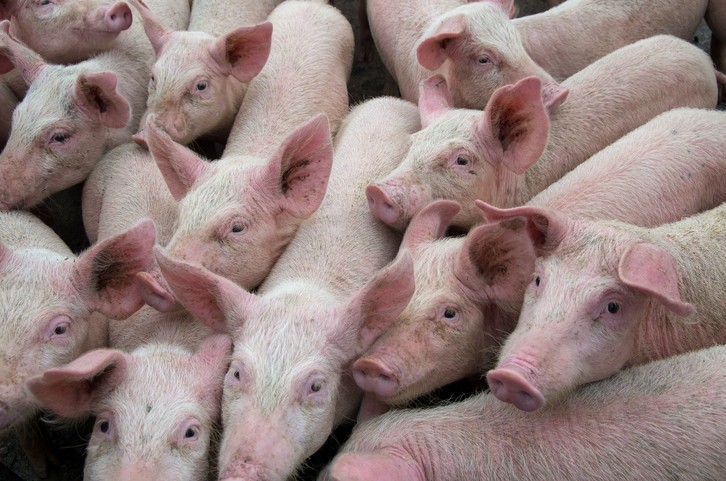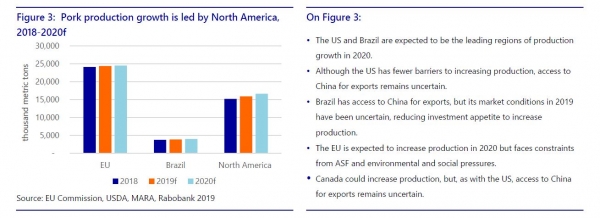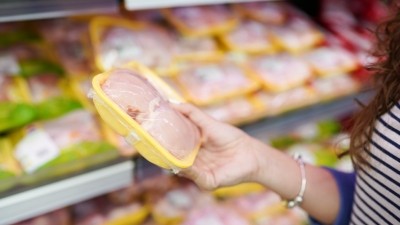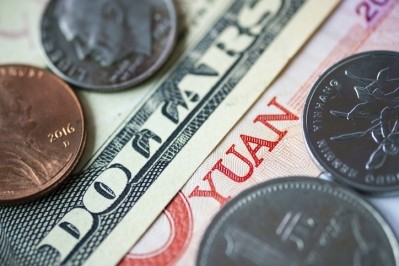Rabobank: Pork producers globally cautious about expansion

Pork prices have hit record highs in some regions, but trade barriers continue to limit the upside in the US and Canada, said the Dutch bank.
Rabobank said it expects ongoing price increases through Q4 2019 and into 2020, as markets work to balance supply and demand.
ASF impact
“Despite rising economic incentives, we expect a limited global production response, as environmental and regulatory constraints, along with the threat of African swine fever (ASF), constrain the industry’s ability to expand.”
ASF is responsible for an estimated 25% decline in the global hog herd, yet the world remains cautiously optimistic on the potential market demand for pork, said the analysts.
“The allure of potential record-breaking exports has, thus far, been outdone by the risks.
“Restrictive trade policies and inconsistent export demand create a degree of uncertainty that makes production increases less compelling.
“The growing threat of ASF has many producers reluctant to add production, as the risks of herd losses and/or trade disruption mount.”
Regionally, also, producers face rising environmental and regulatory challenges that limit growth, noted the quarterly.
“Nevertheless, in order to meet the expected 5m to 10m metric ton global pork deficit in 2020, the industry may find adequate economic incentive to grow supply.”
Market dynamics
Chinese holidays
In China, retail prices rose 78% MOM in September, as inventories were depleted following the surge in pork demand associated with the autumn holidays.
“Slow herd replenishment, particularly in ASF-affected regions, is contributing to the near-term shortfall and resulting increase in pork prices. Pork consumption has suffered, as high prices limit interest.”
Even so, efforts to rebuild the herd are underway, said Rabobank, as the economic incentives are sizable and will promote rapid growth where feasible.
Brazilian pork exports boosted by Chinese demand
Brazilian pork exports were 12% higher YOY through September, with China surpassing Hong Kong as the leading importer, said the analysts.
Brazil, found the pork quarterly, continues to be an important supplier to China due to the ASF crisis, with the value of pork exports up 9% YOY.
Shipments were also significantly higher to Chile, Uruguay, and Russia, they said.The recent approval of six additional pork plants for export to China was supportive of exports in the quarter, and Rabobank expects an additional increase of 17% this year in exports.
Those strong export sales, coupled with improved domestic pork demand, have helped support record high prices in the Brazilian market, continued the analysts.
Indeed, they noted that the last Brazilian Supermarket Association (ABRAS) report, which measures domestic consumption, showed that, in the first seven months of 2019, there was a 3.4% improvement, the strongest increase in the last five years.
Brazilian swine industry optimism has been buoyed by the improvement in consumer purchasing power, they added.
“Producer margins have strengthened considerably, given the increase in prices and a decline in production costs. Feed costs have fallen 6% YOY on favorable crop results. Conversely, average live hog prices in September in the state of São Paulo closed 33% higher YOY. Current market dynamics support herd growth, although producers remain restrained in their responses.
“For the coming months, international demand should continue to boost Brazilian pork prices and support margin recovery.”
US swine scene
In the US, Rabobank noted that record production has more than offset a surge in export demand.
A high level of hog slaughter in the US is weighing on markets, depressing producer returns, said the analysts. Productivity gains continue to outpace expectations, adding further stress to an oversupplied domestic market, added the swine market specialists.
“Robust exports are absorbing much of the production increase, but they have been unable to fully keep pace. Despite strong exports, Rabobank expects more moderate production growth [in the US] in 2020.”
Global trade drives strong returns, but EU industry growth is constrained
Europe remains the key supplier of pork to the global markets, found Rabobank.
“Brisk exports of pork to China and other parts of Asia helped support a 31% YOY increase in prices and near-record margins. Reports of ASF in Europe have mostly affected feral swine populations, along with sporadic commercial cases.”








